Having sailed from Brisbane just after Christmas, the Belgian Merchant Passenger ship (NH 89824) arrived at the Port of Surabaja on the north east coast of Java on JAN 11, 1942. From there, the men of the 2/131 and the 26 FA Bde went by train or vehicle convoy inland to the city of Malang. It was at the airfield near there (Singosari) that they encountered the AAF B-17 & B-24 bombers and married up with them acting a ground crew.
This relationship continued through the end of Feb ’42 when the Japanese invasion force landed on the far western coast of the island. SGT Roy Offerle[1] was present with D Battery. In a 1978 interview, he told the story of the 2/131’s involvement in the defense of Java.
Pre-Invasion
The 19th Bomb Group . . . they had B-17’s there, and they got a few B-24’s, I think. Colonel Eubank was in charge and had offered to fly us out. But since we were a combat unit, and the Dutch said that they were going to fight to the last man and hold the island, the U.S. had declined this offer. They thought we should stay there and fight since we had our weapons. If we flew out, we would have to lose them. Since the Dutch were fighting there, we should stay there and fight. So this was evidently the decision. We could have gotten off[2]. I don’t think the average person in the unit understood the gravity. The officers probably did. We heard that the Japs had taken Sumatra, and then they landed in Bali. Then we heard that they were coming into Java. They were splitting our unit, and E Battery was going toward Surabaja, and the bulk of the unit was going up to the other end of the island to meet the Japanese there.
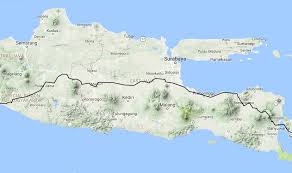
Movement to contact
As it became apparent that the invasion force was approaching, LTC Tharp decided to split his force. He assigned E Battery with the mission to ensure that the AAF planes could evacuate to Australia, then they were to move north to protect the port and city of Surabaja. He and the bulk of his troops moved west to locate the line of resistance to the invasion. Here Roy Offrele picks up the narrative for the main force:
The Invasion
We proceeded on to Bandung, I believe. We heard when we got up to the other end that [the Japanese] had landed in three places—in the western end of the island, the central part, and somewhere near Surabaja. But we had had no man-to-man contacts with them up until this point. Incidentally, there was a lot of Australians that we ran across that had landed in Java. [editor’s note: 2/2 Pioneers, the 2/3 and 2/4 Machine Gun Battalions] These Australians were excellent soldiers — I’d rather be with some Australians than anybody I know in the world.
There were some more English there, and there were some more Americans—a headquarters unit—of which they had a full colonel in charge—Colonel [Albert] Searle[3], I believe. I believe it was the 61st Brigade [USForces-Java]. They had their headquarters around Bandung or Batavia—on that end of the island. We eventually ended up in Bandung, if I’m not mistaken.
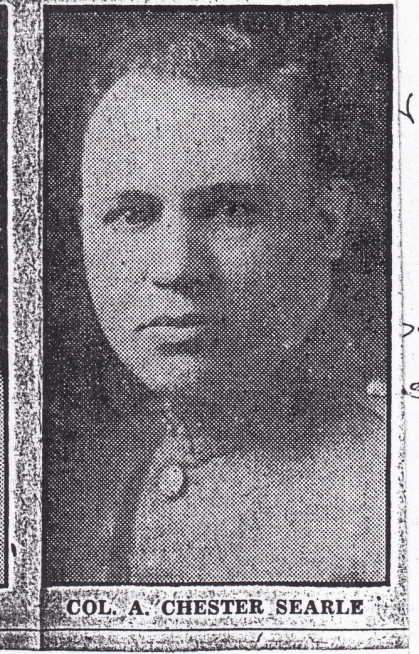
Bandung had too many routes coming into the city—one on the left side and one on the right side. They sent one battery—I believe it was F Battery—and two guns to the west end, and third and fourth section—I was in the 3rd Section—went to the north of the town on another road with some Australians who had a half-track. They were the 2nd Pioneers. They assigned us to watch and see if the Japs came in that way. We set up a roadblock at this town north of Bandung.
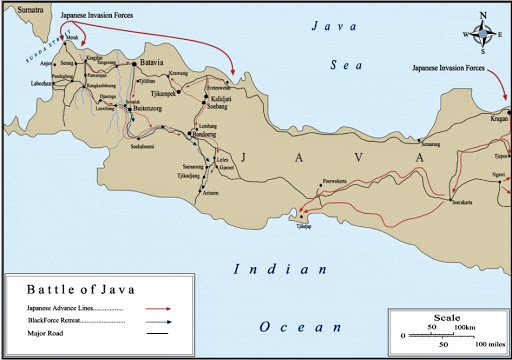
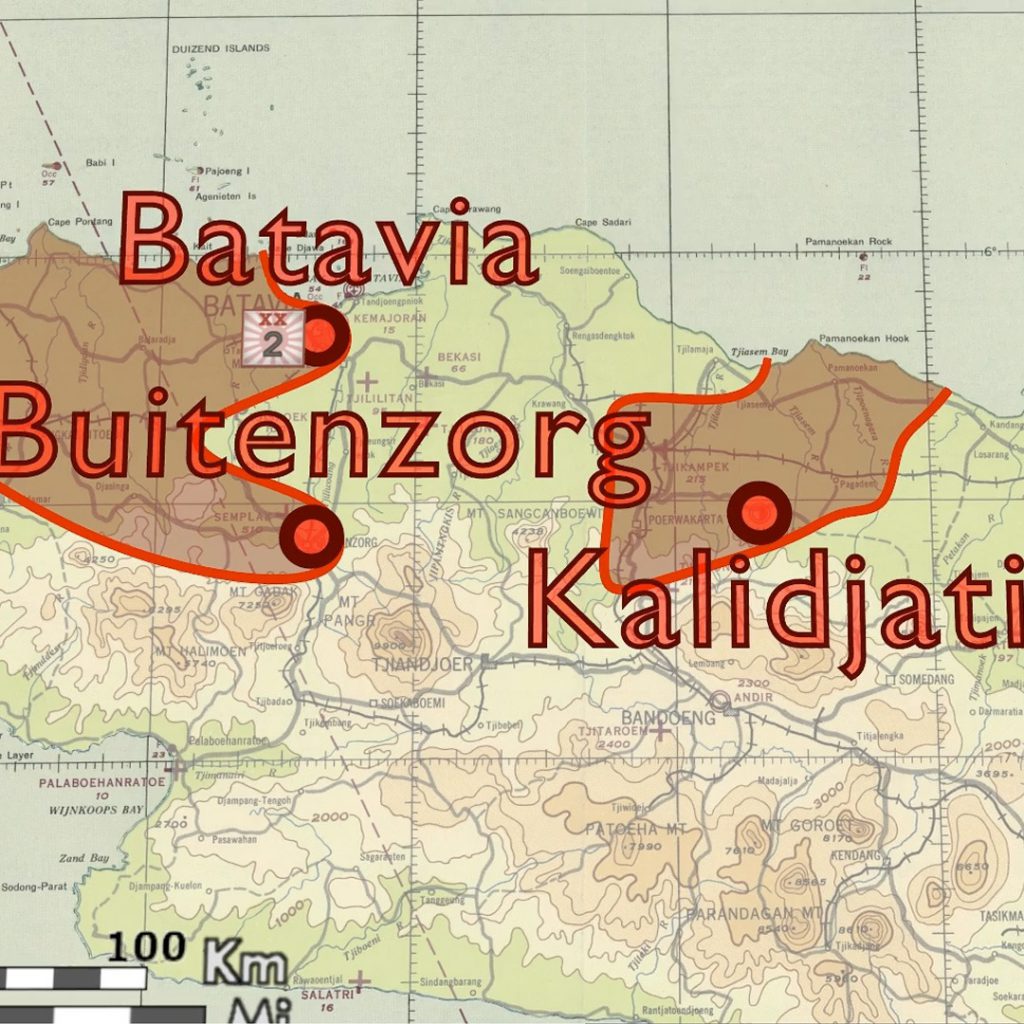
Deployed in support of Australian Units
As mentioned above, the 2 firing batteries of the 131 set up in support of the 2/2 Pioneer and both the 2/3 and 2/4 Machine Gun BNs. Per WIKIPEDIA, the 2/4 contingent were there under interesting circumstances:
While the majority of the battalion was fighting on Singapore, a small detachment of 106 men were sent to Java. The majority of these were the 94 men that had failed to return in time from their unofficial leave in Fremantle. After missing their ship, they had been arrested by the military police and were confined to quarters in Karrakatta Camp for two weeks. On 30 January they were released and under the command of two officers and a small group of NCOs, they embarked upon Marella, which set out for Singapore via Palembang in Batavia, escorted by Canberra.
After reaching Tanjong Priok on 10 February, the detachment found itself placed under Dutch command and formed into a composite infantry company, within the reserve battalion of the ad hoc formation known as “Blackforce”, which had been formed under Brigadier Arthur Blackburn. The detachment from the 2/4th found itself around Buitenzorg, where the majority of the 2/4th personnel formed part of an ad hoc infantry force, known as the Reserve Group, or 3rd Battalion, consisting of eight platoons. They fought several defensive actions before being overwhelmed and taken into captivity on 12 March 1942. A small number continued to fight as guerrillas but were eventually all captured. Some of the men were held in camps in Java and Sumatra, although the majority were later sent to Singapore before being transported to camps elsewhere in south-east Asia.
https://en.wikipedia.org/wiki/2/4th_Machine_Gun_Battalion_(Australia)
Apparently the 2/2 Pioneers and 2/4 MG BNs were originally destine for Singapore but were re-routed when that Garrison fell in mid-Feb.
Blackburn established his force into a brigade formation, utilizing the pioneers and machine gunners as infantry battalions, and forming a third infantry battalion from troops that were assigned to garrison the base, as well as logistics and administrative personnel, and members of the AIF who had been able to get out of Singapore before it fell. Due to the presence of a large amount of equipment on the wharf, which had been intended to be sent to Singapore before its fall, Blackforce was able to re-equip itself handsomely with vehicles including carriers and armoured cars, Bren guns, Thompson sub-machine guns and mortars; but there were no machine guns.
https://en.wikipedia.org/wiki/2/3rd_Machine_Gun_Battalion_(Australia)
With 2LT Stendsland acting as the forward observer, the TXNG artillerymen fired much of their available ammunition as IJA forces were approaching the bridge at Leuwiliang.
As the Japanese began advancing, Blackburn sought to re-orient his troops, and the machine gunners were subsequently moved to the Leuwiliang area, 24 km west of Buitenzorg along an expected main avenue of advance, and they were given the task for defense the bridge over the Tjianten River. In his North Tx Univ Oral History Interview, 1LT Wright states that his F Battery fired over 300 shells killing over 400 IJA troops as they approached the bridge.
https://en.wikipedia.org/wiki/Battle_of_Leuwiliang
Highly accurate volleys from D Battery 2/131st Field Artillery, destroyed many Japanese tanks and trucks. Blackforce managed to hold up the Japanese advance for two full days before being forced to withdraw to Soekabumi, lest it become trapped by Japanese flanking maneuvres, and was ordered to retreat.
https://en.wikipedia.org/wiki/Battle_of_Java_(1942)#Campaign_from_Merak_and_Bantam_Bay_
After that rather short-lived stand at the bridge, the BN moved to the town of Garoet to await further orders. SGT Offerle continues his story:
[Following the surrender announcement], we were told we were pulling back to a small town. Later on, we found out it was called Garoet. The officers later called all the men together and said that the island had capitulated and that they had great serious doubt as to whether we could get off of the island. There had been some evacuation at Tjilatjap, but they understood that there were no more ships there. The best thing that they thought to do was to wait until the Japanese came in and took over. You didn’t know what circumstance or what. It was kind of a shock to everybody. Everybody was very concerned. We wondered what kind of treatment we would get, and what was in store for us—if they would shoot some of us, etc. Or what kind of people they were, or how would they treat us. Or would they go by any rules and regulations in regards to prisoners of war. Your mind was running ninety miles per hour. It was a very serious situation, and everybody was very concerned.
Meanwhile we got some of our ammunition and took it out in the country and buried it. We took some trucks and drained all of the oil and water out of them and pulled the throttles out and let the motors burn up; then we pushed them off the cliff. We took parts of our guns off to render them useless, although we were told not to do that. We destroyed them. We were trying to tear up everything that we could.
I don’t recall being ever searched or anything. Our own officers told us that if we had any weapons, for us to get rid of them—any weapons, like side arms, et cetera. Even identification—I tore up all my identification, but my brother kept his, and it got home. I wish I would have kept mine, but they told us to destroy anything to do with information.
But we were there in the tea plantation for a short while, and then we pulled into town. Then we turned over all of our equipment that we hadn’t destroyed to the Japs. The Japanese commander got up and made us a speech at the train station which took us into Batavia. The front line troops gave us a lot less trouble than some of the guards that we had later on in prison camp.
E Battery at Surabaja

As the main 131 force was supporting the Australian forces in the west, E Battery mounted a spirited but futile defense of the city. Low on ammunition and surrounded on three sides (per the account of 2LT Allen), they were forced to surrender within days after the Dutch capitulation on 8 MAR. It also seems that the group left behind would better be identified as the Surabaja-group rather than E Battery per se. For a variety of reasons, soldiers were swapped out within the remaining group and the larger departing group. It is, therefore, less than precise for us to identify exactly the Surabaja-group consisted of and who was sent to Japan rather than the TBR. There were also a number of TXNG and AAF personnel who were in the hospital and were left with the Surabaja-group; these included the 2 US civilians trapped on Java who had affiliated themselves with the US group,
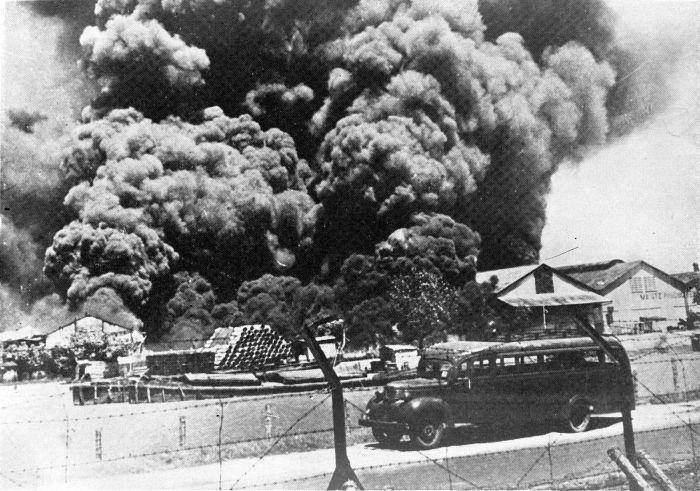
It is worth re-iterating that no US personal were killed by enemy fire on Java. PVT Bruce Rhodes was killed by an accidental GSW on 5 MAR during an ill-fated attempt to sabotage the Springfield rifles. Also, PVT Don Barnes and PFC John Bingham died when the B-24 they were on was shot down in the first air raid by the on the Singosari Airfield on 3 FEB. The only US POW to die of wounds sustained in combat was NAVY LT(jg) Francis Weiler on 26 MAR. Of course, there is also USMC GySgt Standish who, after reaching the beach, raced off into the jungle to “kill Japs” with his .45; he was never seen again.
Bicycle camp experience (Apr to Oct 42)
Eventually, they moved us into Bicycle Camp, and the rest of our unit came into Bicycle Camp, too. This is the first time that we ran across the Navy people off of the Houston. [editor’s note: He does not clarify what he meant by the “rest of the unit”.] I presume the reason it got the word “Bicycle Camp” was because that was Dutch infantry that moved around on bicycles. It was a fairly nice camp. The barracks, I remember, were open at the top where you could get air circulation. They were all tile floors and masonry. They were long buildings. They had, like, open areas between the buildings for parade grounds, et cetera. They had quite a few men in there, They had most of the survivors off of the Houston and the Perth—plus a lot of Australians and some Dutch. Most of the sailors had very little to wear. They had very little of anything; they had gotten off of the ship when it was sinking, and there were a lot of them in their skivvies—drawers, shirts, et cetera. Some of them had very little clothing, so I proceeded to outfit a couple of sailors with extra khaki pants, shirts, and shoes that I had. In turn, they helped me rig up a hammock. I believe about between 400 and 500 out of a complement of 1,100 had gotten off of the ship and on the beach. Most of them were in pretty good shape.
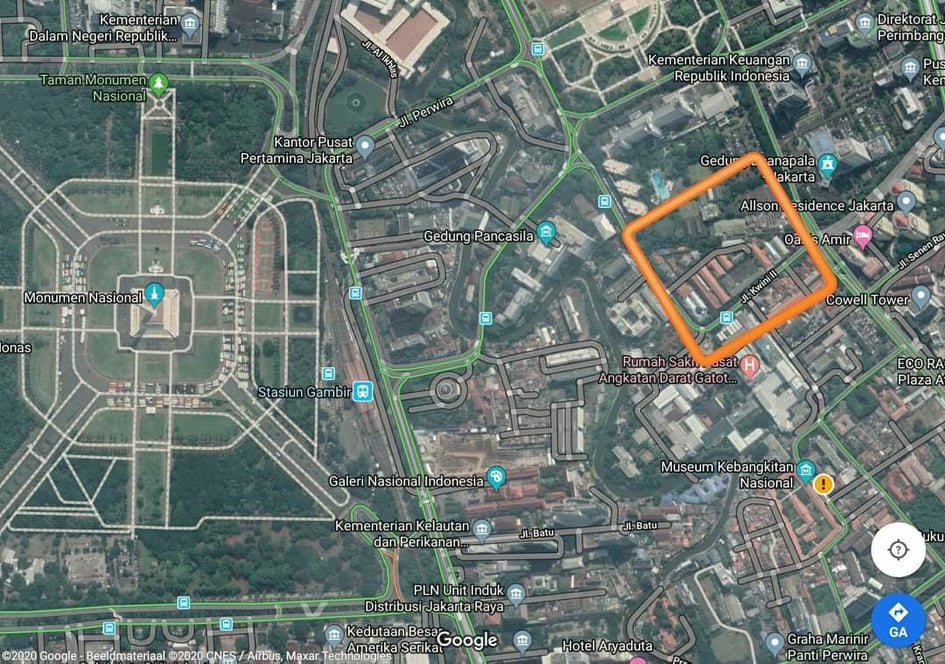
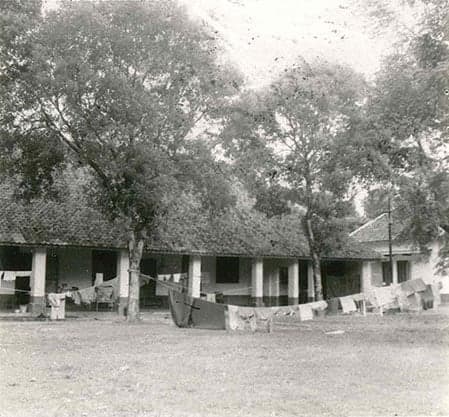
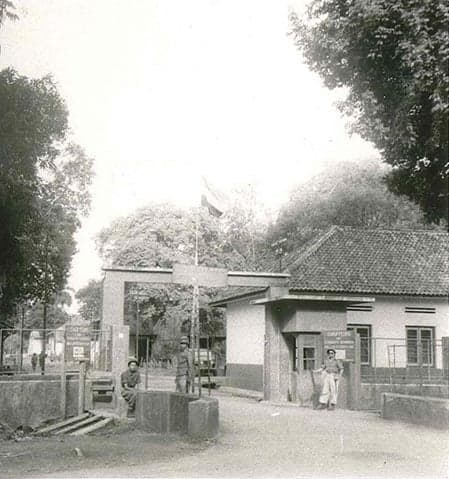
I remember the food wasn’t too hot at first. Although we had been on an American diet—and a good diet—the food was a lot inferior to what we had been eating. I had quite a bit of money, so we were able to buy food on work details. I actually didn’t eat much rice for six months or until my money ran out. I was living on bread that we could pick up and jams and different foods that we were buying outside. Food was very good compared to what we got later. We thought it was inferior, but it was like vegetables, rice three times a day, and a little bit of meat—maybe a water buffalo or dried fish. This food later on proved to be excellent in relation to what we were to get. We thought at the time it was inferior to what we were used to.
We had a few people who got dysentery here and a little malaria—a few diseases. We lost a few men here. I recall one fellow in my section died here of dysentery. The people that were sick got special foods and privileges and this and that as far as food and the cookhouse were concerned. We had some medication at this point. So it really wasn’t that bad to my knowledge.
They had a refinery near Batavia that the Dutch had blown up, and a lot of the men went out there. They were sending men out to the port to load and unload ships, work on the docks, straightening up, cleaning up. We were forever stealing. I became a professional thief. We stole everything that we could from them over a period of time. The Navy was very good at this. I guess—I don’t know why—being regular Navy and being on the beach without anything, they had to scrounge to make out. I came out a professional thief and an excellent scrounger—as good as anybody. It took me a year or two to get into this, where everybody else . . . like the sailors that had nothing, they were making candy out of eggplants and selling it. They would go around peddling this, and the first thing you knew is that they had a lot of money, and they were living well and eating good, I was just sitting back spending my money; I wasn’t making any. It was the survival of the fittest, and you do have to do things that you possibly never thought of or did before to make out, so to speak. A lot of the men did this.
The sailors were very good with their hands—some of them. They had built all kinds of eating gear; they had made lamps; they had made this and that. It was just tremendously unique for a bunch of men who hit the beach with nothing. They had a show, and the Japanese went to it, and they were very awed. They had woven and crocheted and knitted all kinds of things. They had hand-carved out of wood all kinds of things.
We had a couple of McManus boys, sailors. One had a natural art of painting, and did pretty pictures. He had taken some clay and charcoal and just what he had his hands on. He had Petty pictures all over the barracks walls. [interviewer: You call these “Petty pictures?”] That was the name of the artist that drew these luscious girls. If you could get an Esquire from back in the 1940s, they’re full of them. He had Walt Disney characters. . . . He had Mickey Mouse and Donald Duck all over the place. Tremendous pictures! Some life-size. He did this with clay—orange clay, red clay—charcoal, and blue, yellow . . . when he got a little turmeric or curry powder. He had them life-size. Beautiful pictures! He had them all over the place, which was nice.
We had a fellow with us that could play a piano—old “Friday” Armistead—and they got an old beat-up piano somewhere, and we had one or two shows while we were there. “Friday” could play anything on a piano that you could hum or whistle. He knew a thousand songs. He could make a piano talk.
E Battery to Japan
Although it leaves a lot to be desired in terms of specificity, the best account of the saga of the E Battery, comes from 1Lt Allen in his published memoires. Some accounts suggest that E Battery was eventually sent to the Bicycle camp and then on to Japan (Fukouoka area) via Singapore. They apparently crossed paths with LTC Tharp’s group there but were never reintegrated with the 131 groups. [see Section 28.3 for a fuller description of the POW of this group.]
Irving Offerle
My brother was about two years older than I was. I think that when we were very young, my father had told him that he was the oldest and that it was his duty and obligation to look after me. He took it literally, so he did this up until he died. He always shared everything with me, and he always saw that I had . . . but I buddied up with a couple of sergeants. A supply sergeant called Keith F. Naylor, whose nickname was “Zeke,” and a gunner sergeant called Ed Bruner from Megargel, Texas. Ed, Zeke, and I kind of buddied up together and shared our stuff.
Scuttlebutt used to fly very wide, high, and fancy, and every day you would hear somebody say, “The Americans are coming! We’re going to get out!” “We’ll be out in three months!” “We’ll be out in six months!” “We’ll be out in thirty days!” It got to where if you listened to it, you would go crazy. I finally adopted the attitude . . . and I didn’t know it at the time, but they say this is the best way to live. The Bible tells you to live day by day. I finally got around to living day by day.
TBR begins
It wasn’t until Oct 42 that the first contingent of US POWs were sent to Burma with the bulk for that group departing in Jan ‘43.
[1] https://www.humanitiestexas.org/news/articles/interview-roy-m-offerle-world-war-ii-pow?fbclid=IwAR1Y-EZYqBBzg6aAfDJ9UwdARAqaj_im8-gf9_EXXnBv-D5edLkaFFJnuP0
[2] Some 2 dozen 131 soldiers did indeed depart with the AAF and were officially transferred to the AAF.
[3] COL Searle was eventually taken as a POW and spent time with the 131 Bn at the Bicycle camp but as a senior officer he was removed and sent to Manchuia where he was liberated from the camp known as Mukden. Prior to the invasion, he had arranged to have the majority of the USForces-Java staff and the 61st FA Bde as well as the 26th Arty Brigade evacuated.
